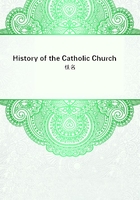
第323章
On the accession of James II. (Feb. 1685) the Catholics of Ireland had reason to hope for an improvement of their position, and this time at least they were not disappointed. The Duke of Ormond was recalled, and the Earl of Clarendon was sent over as Lord Lieutenant. He was instructed to maintain the Act of Settlement, but at the same time to allow Catholics full freedom of worship, and to consider them eligible for civil and military appointment. With him was associated as military commander Colonel Richard Talbot, Earl of Tyrconnell, brother of the late Archbishop of Dublin. In accordance with the well-known wishes of the king, Catholic officers were appointed in the army, Catholics were allowed once more to act as sheriffs, magistrates, and judges, and steps were taken to see that the corporations, which had been closed against Catholics for years, should be no longer safe Protestant boroughs. The Irish bishops hastened to present an address of welcome to the king, and they were assured of his Majesty's favour and protection. Religious communities of both men and women were re-opened in Dublin, and in the principal cities throughout Ireland, and synods of the clergy were held to restore order and discipline.[75] Irish Catholics as a body were delighted with the royal edicts in favour of religious toleration, but the small Protestant minority in the country were alarmed at seeing Catholics treated as equals, and particularly at the prospect of seeing the Act of Settlement upset, and their titles to their estates questioned by the real owners whom they had despoiled twenty years before. Their fears were increased when the Earl of Clarendon, whom they regarded as in some sort their protector, was recalled (1687) to make way for the Earl of Tyrconnell as Lord Lieutenant of Ireland. The new Lord Lieutenant was far from being perfect, nor was he always prudent in his policy or his actions, but if his conduct towards the small body of Protestants in Ireland be compared with that of his predecessors for more than a century, or with that of his successors, towards the Irish people, he ought to be regarded as one of the most enlightened administrators of his age.
The revolution that broke out in England (1688), the arrival of William of Orange (1688), and the flight of King James to France were calculated to stir up strife in Ireland, though it is remarkable as showing the fair treatment they had received that a great body of the Irish Protestant bishops were in favour of supporting James against the usurper, and that it was necessary to have recourse to lying stories of an intended general massacre to stir up opposition to the king. Tyrconnell, who had long foreseen such a course of events, had made wonderful preparations, considering the situation of the country and the constitution of his council. Had James II. contented himself with inducing Louis XIV. to send arms and ammunition to Ireland and to utilise to the fullest the splendid French navy, Tyrconnell, aided by the able Irish officers who flocked to his standard from all parts of Europe, might have bidden defiance to all invaders.